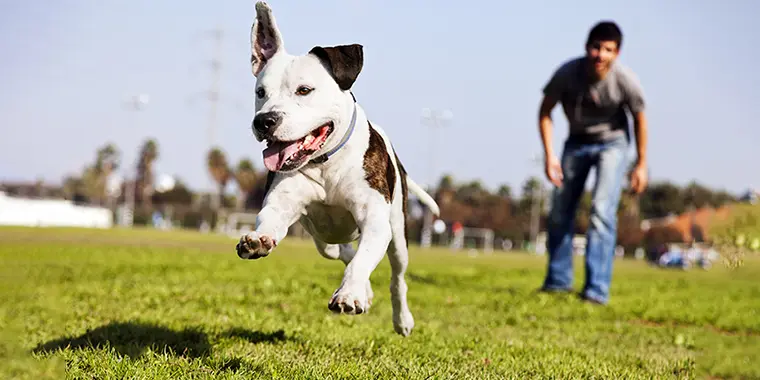Top Pet Training Tips for Better Behavior and Happiness

Table of Contents
Training a pet is an essential step towards ensuring a harmonious relationship between you and your furry companion. Pet training not only helps in managing your pet’s behavior but also enhances their mental and emotional well-being. Whether you are a new pet owner or have experience, implementing a thoughtful and consistent training strategy can lead to a more fulfilling life for both you and your pet.
Understanding the Importance of Pet Training
Effective pet training is the foundation of good behavior. It allows pets to develop important skills, such as following commands and interacting well with others. This process involves patience, consistency, and positive reinforcement. The primary goal is to teach your pet the desired behaviors while reducing undesirable actions. When pets are trained properly, they can thrive in various environments, whether at home, during walks, or around other animals and people.
Training provides more than just good manners. It also helps in building a bond between you and your pet. The time you spend teaching your pet is an investment in your relationship. The more you engage with your pet through training, the better you can understand their needs and reactions. This mutual understanding fosters trust and ensures that your pet feels secure.
Setting Clear Expectations
One of the most important aspects of pet training is setting clear and consistent expectations. Pets, particularly dogs, respond best when they know exactly what is expected of them. For instance, if you want your dog to sit on command, it is essential that the command is always the same and given in the same tone of voice. Consistency in commands helps your pet understand what behavior is being asked for.
In addition to verbal cues, non-verbal communication plays a significant role. Hand signals and body language can reinforce verbal commands, helping your pet understand even better. Remember that pets are incredibly perceptive to their environment, so maintaining consistency in your actions and reactions is key. For example, if you reward your pet for sitting one time but scold them for the same behavior the next time, this inconsistency will confuse them and slow their progress.
Positive Reinforcement
Positive reinforcement is a cornerstone of successful pet training. Rewarding good behavior encourages pets to repeat that behavior. Positive reinforcement can take many forms, including treats, verbal praise, or even physical affection. When a pet performs the desired action, such as following a command, they should receive a reward immediately, reinforcing the connection between the action and the reward.
This method is highly effective because it focuses on rewarding positive behavior rather than punishing undesirable actions. Over time, your pet will learn that good behavior leads to enjoyable outcomes. However, it’s essential to use rewards that your pet finds motivating. Not all pets are food-driven, and some may respond better to praise or toys. Identifying what motivates your pet is crucial in implementing positive reinforcement effectively.
Socialization for Better Behavior
Socialization is an often overlooked but vital aspect of pet training. Exposing your pet to various environments, people, and other animals in a controlled and positive manner helps them develop confidence and adaptability. Socialization prevents fear-based behaviors and aggression, which are common in pets that haven’t been properly socialized from a young age.
Start socializing your pet early, but if you’re working with an older animal, it’s never too late to begin. Gradual exposure to new experiences and environments helps reduce anxiety and fosters better interactions with others. For example, if you’re training a dog, introducing them to other dogs and people while ensuring they are comfortable can go a long way in improving their behavior in social situations.
Patience and Consistency
Training pets, particularly dogs, requires a great deal of patience. Pets do not always learn as quickly as we would like, and they may make mistakes along the way. However, it is important not to react with frustration or anger. This could lead to fear or confusion and hinder the training process. Instead, maintain a calm demeanor and continue to reinforce positive behavior.
Consistency in training is just as important as patience. Pets thrive on routine and repetition. Regular training sessions, even if brief, can make a significant difference in your pet’s behavior. Over time, the training will become second nature to your pet, and you will see noticeable improvements in their actions and reactions.
Troubleshooting Common Training Challenges
Despite best efforts, pet training can sometimes present challenges. For instance, some pets may exhibit stubbornness or a lack of interest in training. In such cases, it’s essential to reassess your approach. You may need to make the training sessions more engaging or break down the behavior into smaller, more manageable steps. Consider adjusting your reward system or even consulting a professional trainer if necessary.
It’s also important to remember that pets are individuals with unique temperaments. What works for one pet may not work for another. Tailoring your training approach to fit your pet’s personality and needs will lead to more effective results. With persistence and a bit of creativity, you can overcome obstacles and continue to progress with your pet training goals.
Incorporating pet training into your daily routine is an investment in your pet’s happiness and well-being. Through patience, positive reinforcement, and consistent efforts, you can help your pet become a well-behaved, confident, and content companion. Whether you are training a puppy or working with an adult pet, the techniques discussed here will aid in fostering a stronger relationship and ensuring that your pet enjoys a balanced and joyful life.



